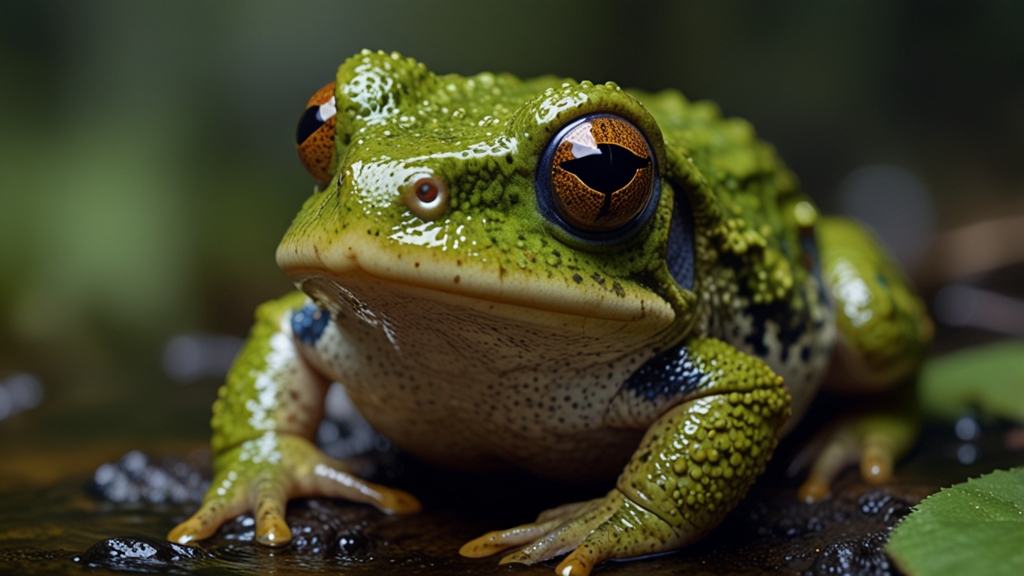Animals That Have Defied Evolutionary Expectations
Evolution, the gradual process by which organisms develop and diversify from earlier forms, has shaped the vast tapestry of life on Earth. However, some animals have evolved in ways that defy typical evolutionary expectations, displaying traits and behaviors that are both fascinating and confounding. This article explores these curious creatures and the unusual evolutionary paths they've taken.
The Axolotl: The Eternal Youth
The axolotl, a type of salamander native to lakes underlying Mexico City, defies a key evolutionary principle known as metamorphosis. Most amphibians undergo significant changes after their larval stage, transitioning into adulthood with different habitats and diets. The axolotl, however, remains in its aquatic larval form for its entire life.
Unlike its relatives that transform into land-dwelling adults, the axolotl retains its gills and continues to live underwater, a condition known as neoteny. This eternal youth comes with an incredible ability to regenerate lost limbs, making the axolotl a subject of scientific intrigue.
The axolotl's lifespan and curious lifecycle allow it to exploit aquatic environments continuously without the need to adapt to terrestrial life, a significant deviation from the typical evolutionary path of salamanders.
Tardigrades: The Masters of Survival
Tardigrades, often referred to as water bears or moss piglets, are microscopic animals renowned for their resilience. These creatures can survive extreme conditions that would be fatal to most life forms, such as radiation, dehydration, deep-sea pressures, and the vacuum of space.
The secret to their survival is a process called cryptobiosis, where they essentially dry out and suspend their metabolism in response to unfavorable conditions. This ability to enter a state of near-total dormancy allows them to outlast environments that otherwise spell doom for other organisms.
Recent studies have even discovered that some tardigrades can incorporate foreign DNA from other organisms into their own, potentially adding to their robustness and ability to adapt to extreme environments.
This evolutionary resilience is far beyond what we see in most animals, making the tardigrade a living testament to life's incredible adaptability and toughness.
Platypus: A Mammalian Oddity
The platypus is one of the most unusual mammals on Earth; it exhibits a blend of reptilian, avian, and mammalian traits that seem to defy evolutionary logic. These egg-laying mammals possess webbed feet, a duck-like bill, and the males carry venomous spurs on their hind legs.
When the platypus was first discovered by Europeans in the 18th century, they believed it was a hoax stitched together from various animals. The genetic makeup of the platypus further compounds its oddity, revealing a mix that includes genes typically found in birds, reptiles, and mammals.
The platypus genome has provided valuable insights into evolutionary biology, illustrating how certain traits have been preserved through deep evolutionary time and showcasing the plasticity of evolutionary processes.
In essence, the platypus serves as a living mosaic of evolutionary history, blurring the lines between major animal classes and challenging our understanding of mammalian evolution.
Coelacanth: The Living Fossil
The coelacanth, a deep-sea fish once thought to be extinct for 66 million years, was rediscovered off the coast of South Africa in 1938. This "living fossil" has changed little since the Devonian period, a testament to its successful adaptation to deep marine environments.
Coelacanths possess unique lobed fins that resemble the early stages of limb development in terrestrial vertebrates. Their skeletal structure and other physiological traits provide critical insights into the evolutionary transition from sea to land.
The rediscovery of the coelacanth has been a significant event in evolutionary biology, demonstrating how some species can remain relatively unchanged over millions of years while continuing to thrive in their ecological niches.
Conclusion
The animal kingdom is full of surprises, and the creatures that defy evolutionary expectations highlight the incredible diversity and ingenuity of life. From the regenerative axolotl to the resilient tardigrades, the mosaic-like platypus, and the ancient coelacanth, these animals challenge our understanding and inspire continued curiosity about the evolutionary processes that shape life on Earth.









